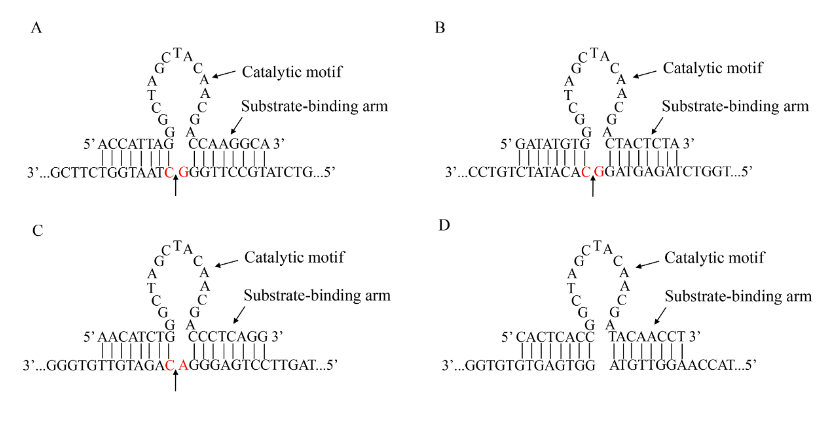DNAzymes effectively inhibit the expression of viral genes. Duck hepatitis A virus type-1 (DHAV-1) genomic RNA carries an internal ribosome entry site (IRES). The IRES initiates the translation of DHAV-1 via a mechanism that differs from that of cap-dependent translation. Therefore, it is an attractive target for the treatment of DHAV-1. In this study, we designed 6 DNAzymes (Dzs) specifically targeting 300-618 nt sequence in the DHAV-1 5’untranslated region (UTR) (a predicted IRES-like element). In the presence of divalent metal ions, three designed DNAzymes (DZ369, DZ454, and DZ514) efficiently cleaved the 300-618 nt sequence of the DHAV-1 5’UTR RNA. The activity of the Dzs was particularly dependent on Mg2+ ions. Subsequently, the Dzs effectively inhibited the translation mediated by the 300-618 nt of DHAV-1 5’UTR in duck embryo fibroblasts (DEFs). Importantly, DZ454 showed the strongest inhibitory effect, and its inhibition was time and dose dependent. However, none of the Dzs showed significant inhibition of cap-dependent translation. Moreover, DZ454 inhibited the replication of DHAV-1. These results suggest that these Dzs show specificity for target RNA. In conclusion, the designed DNAzymes can be used as inhibitors of DHAV-1 RNA translation and replication, providing new insights useful for the development of anti-DHAV-1 drugs.
This study was published in Frontiers in Microbiology, and titled as “Specific DNAzymes cleave the 300–618 nt of 5’UTR to inhibit DHAV-1 translation and replication”. Doi: 10.3389/fmicb.2022.1064612.

Fig. 1 Gene sequence and secondary structure of the DNAzymes.

